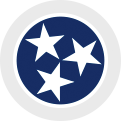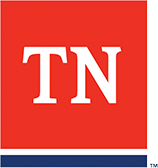Programming for Inclusion
Part 3 of Arts & Inclusion, A Guide for Expanding Access to the Arts for Persons with Disabilities.
From William Coleman, CDE, Former Director of Arts Access –
Ludwig von Beethoven, whose hearing loss began in his late twenties, said “Music should strike fire from the heart of man.” For artists and arts organizations, the challenge is to share the power of the arts with all. Creative, strategic, thoughtful arts programming can make powerful arts experiences accessible to a variety of audiences. The community conversations yielded some ideas that are summarized here. The real key to inclusive programming, as for any audience, is to explore and consider what audience members with particular characteristics would appreciate.
Clarify Expectations
Inclusion may mean participating in at least some part of the program, not necessarily the entire event. It needs to be okay for a patron to leave before the official “end” of an activity. Success can be measured in different ways.
Consider the comprehension level or language level of program materials (e.g., program guides, guided tours, concert programs) for optimal inclusion of people with varying intellectual abilities.
Barrier free environment
Train staff beforehand. Disability etiquette training increases the level of comfort, ease and the ability to interact in an inclusive way. Parents of children with disabilities often worry about the lack of support in making an arts experience enjoyable for their children.
Prepare for your audience. Have people in your local disability network evaluate your programs and space for potential issues. Consider “easibility” – the ease with which someone with different characteristics can navigate your space and programming.
Know who to contact for accommodations(i.e., interpreters, Braille, audio description).
Subscribe to listservs, social media or newsletters of your local disability networks or explore TennesseeDisability Pathfinder for additional disability resources.
Use a Programming and Space Checklist: (Section 504 Self-Evaluation Workbook) – This Program Evaluation Workbook is designed to assist staff of National Endowment for the Arts (NEA) grant recipients in evaluating the current state of accessibility of their programs and activities for visitors and employees with disabilities.
Consider what might be an “unwelcome surprise” for some audiences. For example, if your production, performance or exhibit includes moments of extreme sound, lighting or other sensory experiences, it is helpful to announce those before the program begins.
Consider open seating so audience members can move around.

